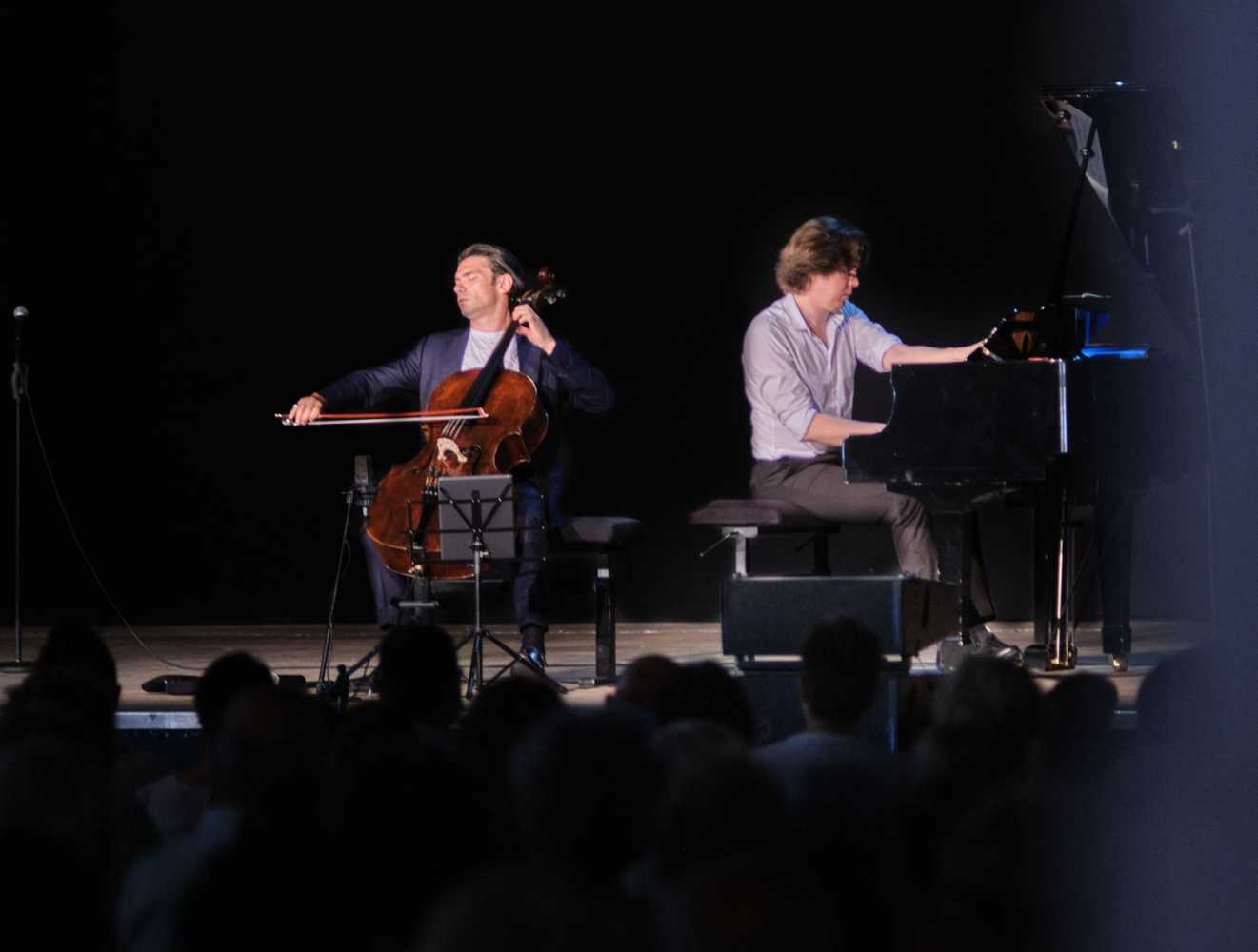APG’s Uniline adapted for French cellist
- Details

And when his concert in Mansle got threatened by the weather on the 11 August, he was able to rely on a sound engineer and sound equipment that could adapt to the various challenges that were bound to rear their heads on that day.
“When Gautier Capuçon's team announced that he was going to tour France, the towns and villages wishing to host the shows were invited to contact him,” explained sound engineer Léopold Randon de Grolier. “He received well over 600 requests in 48 hours.” Depending on the dates, the French virtuoso was accompanied by either Jérôme Ducros or Samuel Parent on piano.
“During the exchanges with the artist, we received a technical sheet with expected references in terms of microphone placement and preferred sound systems,” he said. “The precision and fidelity of the sound required for classical music is extremely important, but thanks to APG and Radio Semnoz, we were able to supply a top-of-the-range sound recording and PA system that was perfectly adapted to the configuration and style of music.”
While APG’s Uniline Compact (UC) range is flexible enough to support a wide range of musical genres, it is particularly well suited for classical music, according to APG’s sales and support engineer Maxence Castelain: "APG’s embedded ISOTOP technology provides a more natural sound from the lower midrange level thanks to a coaxial arrangement of a paper cone loudspeaker and a compression chamber loaded by a phasing piece. This reduces distortion and offers a more natural sound.” A major advantage for sound reinforcement of classical musical instruments such as the cello.
“Classical music concerts are usually happening in venues that are acoustically adapted to this genre, so sound reinforcement isn’t the norm,” explained Randon de Grolier. “Therefore, you must be reasonable in your approach and try to support the acoustic sound, faithfully, without distorting the artists’ sound. This means having experience with classical instruments, knowing the qualities of particular microphones, and combining dynamic and static microphones to achieve accurate sound. The quality of sound expected by classical artist is close to the one they’ve used to when recording albums.
“I generally record the sound checks to broadcast them into the sound system, so that the artist can listen and give his opinion on the sound in the venue. The feeling of the artist is more important than anything else, because they know the sound of their instrument best, and the acoustic result they want to achieve.”
Although the sound system itself was reliable, the same could not be said for the conditions in which it was to be deployed; Because of high risks of thunderstorms in Mansle that day, the organisers decided to move to an indoor venue, thus reducing capacity from 3,000 to 800 people.
“We had to adapt ourselves and the sound system accordingly,” said Randon de Grolier. “The intended system for the racecourse consisted of two stacks of four APG UC206W on top of two UC115B bass speakers, per side. To this main system, two UC206N per side were to be added on stands to cover the crowd on the outside. Obviously, this would have been beyond overkill for the smaller town hall in Mansle.”
APG's Uniline Compact system allowed him to set up a ‘distributed point source’ PA system in the town’s multipurpose hall, using two UC206Ns on stands on both ends to reach the audience at the back. In addition, a UC206W was stacked on top of a UC115B, per side, placed in the centre, which were used to cover the first half of the hall across its entire width.
The UC simplicity and speed of set up allowed the sound engineer to fine-tune the placement of microphones. He knew he could also count on the technical support of APG’s Maxence Castelain and Alexis Reymond who assisted him from the logistical planning phase through to the concert day.
“Mansle multipurpose hall’s concrete walls, ceiling, and floor made intelligibility a major issue,” said Randon de Grolier. “Thanks to APG Live Manager, it was fairly easy for me to set up the system quickly and obtain accurate and precise sound, with faithful rendering of the sound sources. Despite the last minute changes, the show was a resounding success.
















